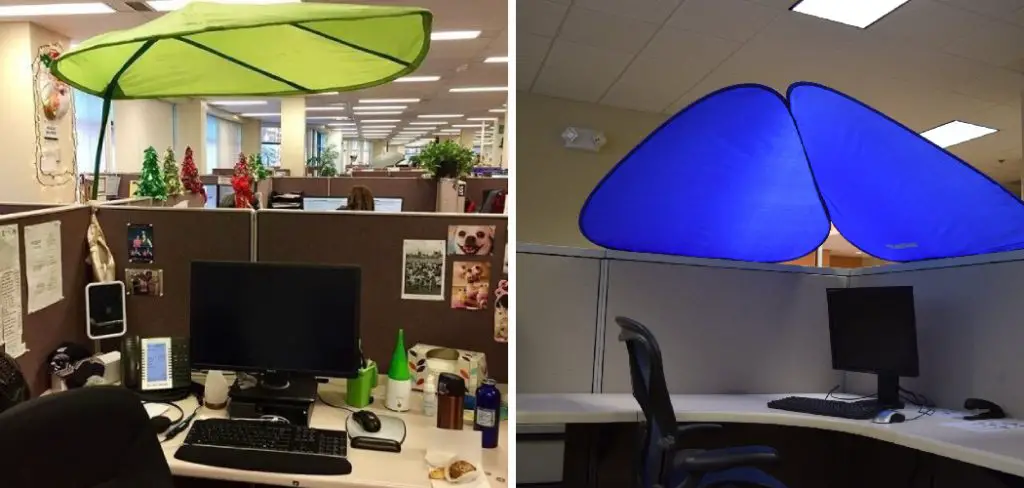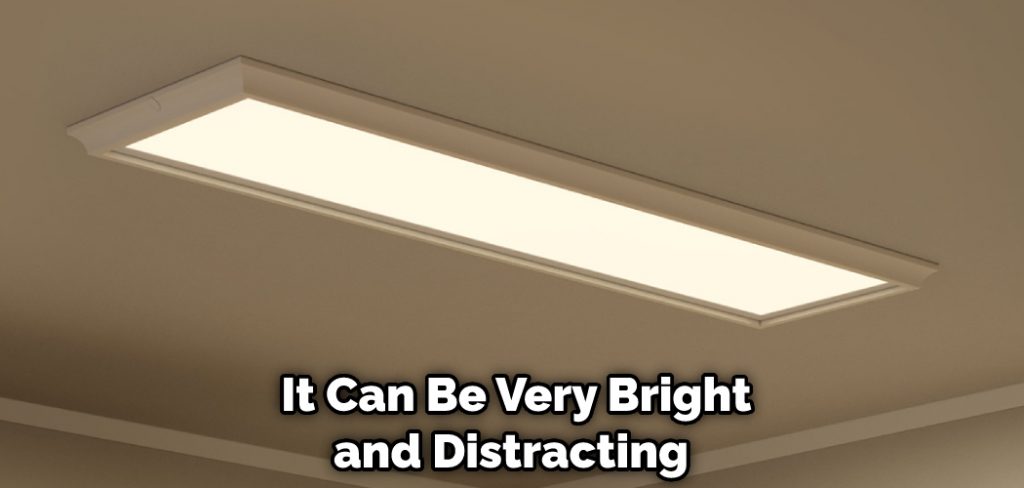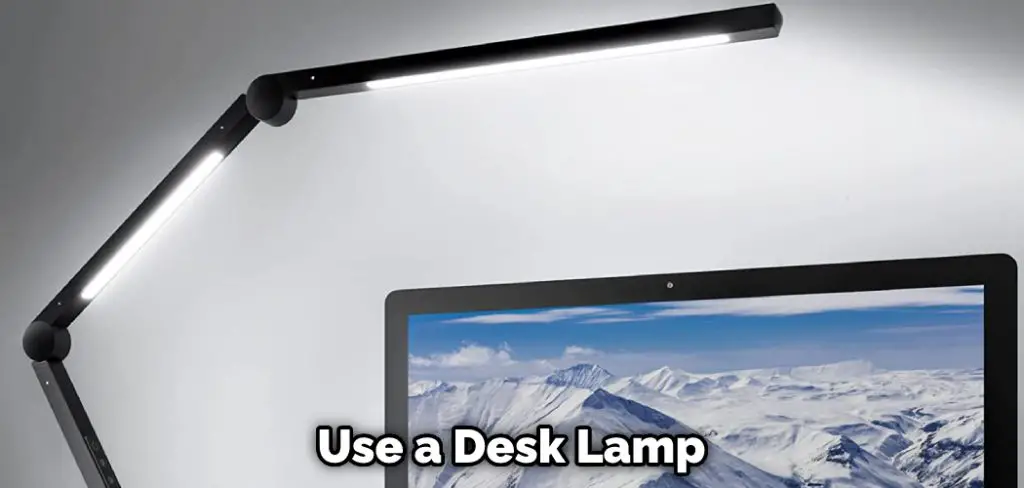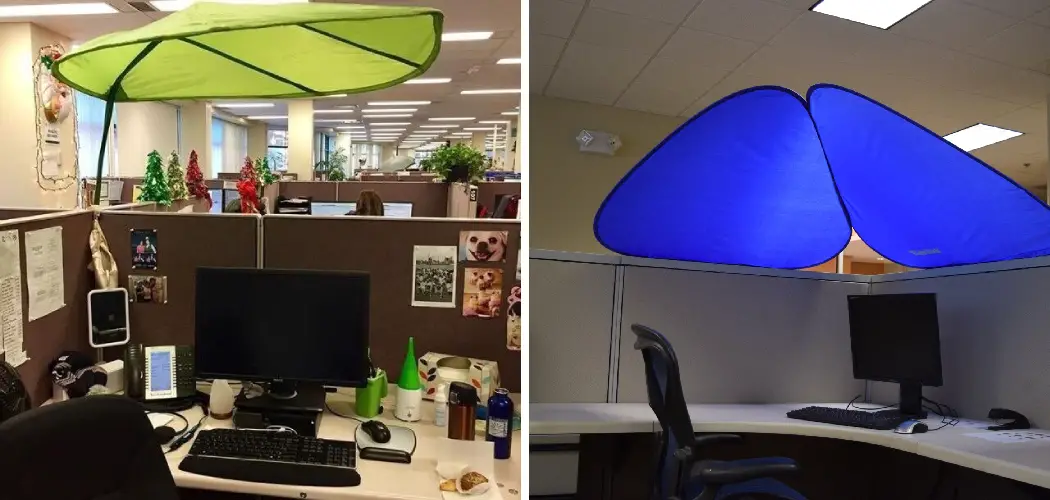The sun is shining, and the birds are singing – it must be summertime! But while everyone else is out enjoying the warm weather, you are stuck at work in a stuffy cubicle.
It’s tough enough trying to get work done in a noisy open office, but when you have to contend with the constant blare of overhead lights, it can feel impossible.

Do you know what would make things better? If you could block out the overhead light. Unfortunately, that’s not always easy to do. But don’t worry – we’ve got you covered! Here are some tips on how to block out that light and create a more productive environment in your cubicle.
This blog post will show you how to block overhead light in a cubicle using some simple items from around your office. So read on – your cubicle-darkened summer awaits!
What Is Overhead Light?
An overhead light is a type of artificial lighting that is typically used in offices and other commercial settings. It is usually bright and harsh, making it difficult to work in areas lit by overhead light.
Why Do You Need to Block Overhead Light in a Cubicle?
There are a few reasons why you might want to block out the overhead light in your cubicle. For one, it can be very bright and distracting. Additionally, the constant glare can make it difficult to see your computer screen or read documents.

If you work in a cubicle that is near a window, the sunlight can also be a problem. While natural light is generally good for you, too much of it can be just as bad as artificial light. Glare from the sun can make it difficult to see your screen, and the heat can make your cubicle feel uncomfortably warm.
10 Effective Ways How to Block Overhead Light in a Cubicle
There are several ways to block out overhead light, but the most effective way is to use a light-blocking shade. These shades are designed to attach to your cubicle walls and block out the light from overhead fixtures.
Light-blocking shades are a great way to reduce the amount of overhead light in your cubicle, but they can be expensive. If you’re looking for a more budget-friendly option, there are some other ways to block out light that you can try.
There are several ways that you can block out overhead light in a cubicle, including:
1. Use a Light-blocking Shade:

One of the most effective ways to block out light from an overhead fixture is to use a light-blocking shade. Several varieties are available on the market, including those made of blackout fabric or paper. Blackout fabric shades are a good option if you want a bit more durability, while paper shades can be a budget-friendly choice.
2. Attach a Curtain:
If light-blocking shades aren’t your thing, you can also try attaching a curtain to the top of your cubicle. This will create a barrier between the light and your eyes, making it easier to work in a well-lit space. You can use various fabrics for your curtain, but a thicker fabric will do a better job of blocking out light. Make sure to hang the curtain as close to the ceiling as possible for the best results.
3. Install a Light Fixture Cover:
If you have an overhead light fixture that is not being used, you can cover it with a light fixture cover. This will prevent light from shining through and into your cubicle. Be careful not to block any fire exits with your cover, though!
4. Use a Desk Lamp:
Another way to reduce the amount of light in your cubicle is to use a desk lamp. This will provide you with a focused light source that you can adjust as needed. Be sure to get a lamp with an adjustable arm so that you can position it exactly where you need it.

5. Move Your Computer Monitor:
If you find the light from your overhead fixture making it difficult to see your computer screen, try moving your monitor. This will help reduce the glare on your screen and make it easier to see what you’re working on. Be careful not to block any vents or cords when you move your monitor, though.
6. Use a Monitor Hood:
If you can’t or don’t want to move your monitor, another option is to use a monitor hood. This will attach to the top of your monitor and help reduce the amount of light coming through. You can get monitor hoods that are made of blackout fabric or paper.
7. Adjust Your Blinds:
If you have blinds in your cubicle, you can adjust them to block out some of the light. Close the blinds completely if you want to block out all of the light, or leave them open a bit to let in some natural light. Because natural light is generally considered to be beneficial, you may want to consider this option if you can’t completely block out the light from your overhead fixture.
8. Use Tinted Glasses or a Screen Filter:
If you find that the light from your overhead fixture is causing eyestrain, try using tinted glasses or a screen filter. Tinted glasses will help reduce the amount of light entering your eyes, while a screen filter will attach to your monitor and help reduce the glare.
9. Take Frequent Breaks:
If you’re having trouble dealing with the light from an overhead fixture, it’s important to take frequent breaks. Get up and walk around for a few minutes every hour or so to give your eyes a break from the light.
10. Talk to Your Manager:
If you’re having trouble dealing with overhead lights in your cubicle, be sure to talk to your manager. They may be able to help you find a solution that will work for both you and the company.
Following these tips should help you to block out the light from an overhead fixture in your cubicle.

5 Additional Tips and Tricks Which May Help
- Use a post-it note
- Stick it to the monitor
- Use washi tape
- Hang something from the cubicle wall
- Move your chair closer to the desk
If you find that the light is still too much for you, there are a few additional things that you can try. Post-it notes are great for blocking out small amounts of light and can easily be stuck to the monitor. If you want something a little bit more decorative, try using washi tape. You can also hang something from the cubicle wall, like a scarf or a piece of fabric. Finally, you can try moving your chair closer to the desk so that your body blocks some of the light.
5 Precautions You Need to Follow While Blocking Overhead Lights
When blocking out light from an overhead fixture, it’s important to take a few precautions.
- First, make sure that you do not block any fire exits.
- Second, do not use anything that will create a heat source.
- Third, do not block any vents or cords.
- Fourth, do not tape anything to the monitor.
- Finally, do not use anything that will cause a tripping hazard. Taking these precautions will help ensure your safety while blocking the light.
I hope these tips have helped you to block out the light from an overhead fixture in your cubicle.
How Do You Light an Office Without Overhead Lighting?
Lighting an office without overhead lighting can be a challenge, but there are several ways to do it effectively. Below are some options you can consider:
- Desk Lamps: Desk lamps are a great way to provide focused light for specific tasks. They come in a variety of sizes and styles and can be adjusted to provide just the right amount of light.
- Floor Lamps: Floor lamps can be placed around the office and provide ambient or task lighting. They also come in various sizes and styles, so you can easily find one that fits your decor.
- Task Lighting includes under-cabinet lighting, table lamps, and spotlights. They can be used to highlight specific areas of the workspace and can help reduce eye strain.
- Natural Light: If possible, try to maximize natural light by positioning desks and workstations near windows. This can help reduce the need for artificial lighting during daylight hours.
- Light Shelves: A light shelf is a reflective surface that is installed above windows to redirect natural light deeper into the room. This can help maximize the use of natural light and reduce the need for artificial lighting.
Overall, there are many ways to light an office without overhead lighting. You can create a bright and inviting workspace that meets your needs by combining different lighting sources.
What Are the Best Lights for a Cubicle?
While there are a number of different lights you can use in a cubicle, a few are better than others.
The best lights for a cubicle are those that provide natural light. This can be from a window or from an overhead fixture. Natural light is generally considered to be the best type of light for your eyes.
You Can Check It Out Choose a Desk Lamp
If you don’t have access to natural light, the next best option is a desk lamp. Desk lamps provide a direct light source that can be adjusted to meet your needs.
Finally, if you work in a cubicle with no windows or overhead fixtures, you may consider using a floor lamp. Floor lamps provide a light source that can be directed toward your work area.
Thanks for reading! I hope these tips have helped you to choose the best lights for your cubicle.
Conclusion
If you want to increase productivity and focus while working in a cubicle, try blocking out the overhead light with one or more of these techniques. By blocking overhead light, you can create a calm and serene work environment that helps you stay focused on the task at hand.
By following the steps above, you can block out the majority of the light that comes into your cubicle from the overhead fixture. This will help reduce distractions and make it easier for you to focus on work.
Hopefully, these tips have helped you to know how to block overhead light in a cubicle so you can work more efficiently.
You Can Check It Out to Keep Motion Sensor Light on In Office

